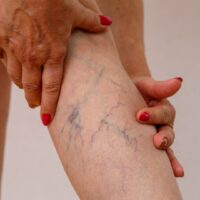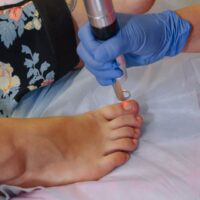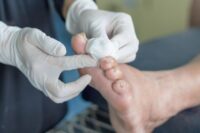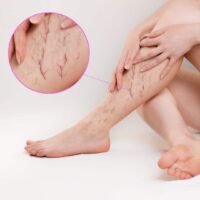Should You Worry About Poor Circulation?
“Cold hands, warm heart” is a cute saying that you may have heard many times if your hands are on the chilly side. However cute the saying is, though, cold hands can be a symptom of poor circulation, as can varicose veins – but is poor circulation really something you should be concerned about? Signs ...
What Is Vascular Disease?
The circulatory system is an amazing array of arteries, veins, and capillaries, all of which work together to keep us alive and active. There are over 100,000 miles of blood vessels in the human body, and if something goes wrong it can mean serious problems or even death. Vascular disease is any abnormality in the ...
Treating Diabetic Foot Ulcers
Approximately 20% of patients with diabetes will, at one time, have a diabetic foot ulcer. This can result in, among other things, amputation. A foot ulcer is an open wound on the bottom of the foot, which can develop because of poor circulation, trauma, or after having diabetes for a long time. It can be ...
Why you shouldn’t ignore a diabetic foot ulcer
Diabetes is the leading cause of non-traumatic amputations in the lower extremities. Approximately 24 percent of diabetic patients who develop a foot ulcer will require amputation. That’s why it’s important to know what a diabetic foot ulcer is and what you can do about it. What is a diabetic foot ulcer? It’s an open wound ...
How sclerotherapy works to erase spider veins
If you have clusters of purple, red and blue squiggly lines under the skin of your legs and ankles, you don’t have to live with them. While spider veins typically aren’t painful, they can be unsightly for many patients who try to cover them up with clothing. Dr. Zakhary uses sclerotherapy to remove spider veins. ...
What you need to know about peripheral artery disease
Peripheral artery disease (PAD) is an often dangerously undiagnosed circulatory condition that affects as many as 12 million Americans. Read on to learn what it is, what the warning signs are, what treatment options are available and what you can do. Definition PAD is a narrowing of the peripheral arteries that serve the stomach, arms ...
How sclerotherapy works to erase spider veins
If you have clusters of purple, red and blue squiggly lines under the skin of your legs and ankles, you don’t have to live with them. While spider veins typically aren’t painful, they can be unsightly for many patients who try to cover them up with clothing. Dr. Zakhary uses sclerotherapy to remove spider veins. ...
Why you should take leg swelling seriously
If you’re experiencing leg swelling in any part of your legs, it’s important to pay attention to the symptoms and seek medical attention. How do you know when leg swelling could indicate a more serious condition? Read on to learn more about the causes and when to seek medical attention. Causes of leg swelling Leg ...
How high blood pressure can damage your arteries and heart
High blood pressure, or hypertension, is often called the silent killer. Over time, high blood pressure can damage your body without you even experiencing symptoms. Read on to learn how complications from uncontrolled high blood pressure can damage your arteries and heart, in particular. High blood pressure is hard on your arteries. Arteries are designed ...
5 things you need to know about wound healing
When your body is trying to heal a wound, the time it takes to heal is determined by many things, including the depth and width of the wound, the type of injury and the amount of contamination. Poor wound healing means it takes longer than normal for the regrowth of skin. This opens up the ...










